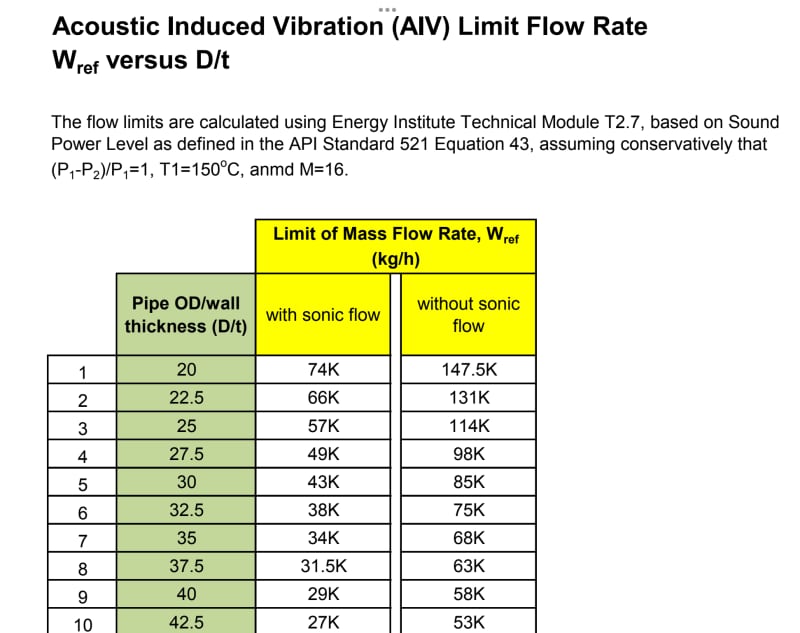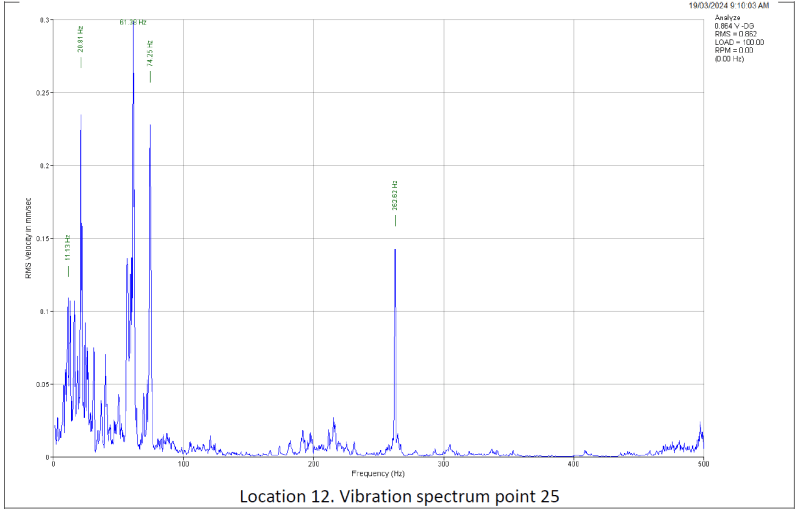leostar81457
Mechanical
Hello All,
Can anyone share any experience or reference on what is the maximum velocity that is allowed in a piping, mostly in terms of Flow induced Vibration? I am expecting static analysis will not be affected by the increased velocity, only the dynamic needs to be considered (FIV). This is for both gas and multi-phase fluid (no slug flow as confirmed).
On one of our facility, they increased the production by increasing the velocity. Since it is already in operation with the increased velocity, we just had an assessment by visual inspection, and we measured the vibration frequency and amplitude using accelerometer and plotted the obtained frequency and RMS reading in T7-1 of EIG guidelines and it was found acceptable.
Now the problem is that they want to increase the velocity much further, and they want to know until how much further it can be increased.
I am not doing much of this FIV calculations and I am only aware of the EIG guidelines' LOF factor to assess this. If I use the LOF factor criteria to back calculate the velocity, I believe it will be very conservative.
So I was wondering if anyone has done the same calculation/assessment before; and hoping to hear some of your insight or possible references that you could share.
Thank you all.
Can anyone share any experience or reference on what is the maximum velocity that is allowed in a piping, mostly in terms of Flow induced Vibration? I am expecting static analysis will not be affected by the increased velocity, only the dynamic needs to be considered (FIV). This is for both gas and multi-phase fluid (no slug flow as confirmed).
On one of our facility, they increased the production by increasing the velocity. Since it is already in operation with the increased velocity, we just had an assessment by visual inspection, and we measured the vibration frequency and amplitude using accelerometer and plotted the obtained frequency and RMS reading in T7-1 of EIG guidelines and it was found acceptable.
Now the problem is that they want to increase the velocity much further, and they want to know until how much further it can be increased.
I am not doing much of this FIV calculations and I am only aware of the EIG guidelines' LOF factor to assess this. If I use the LOF factor criteria to back calculate the velocity, I believe it will be very conservative.
So I was wondering if anyone has done the same calculation/assessment before; and hoping to hear some of your insight or possible references that you could share.
Thank you all.



![[love] [love] [love]](/data/assets/smilies/love.gif)